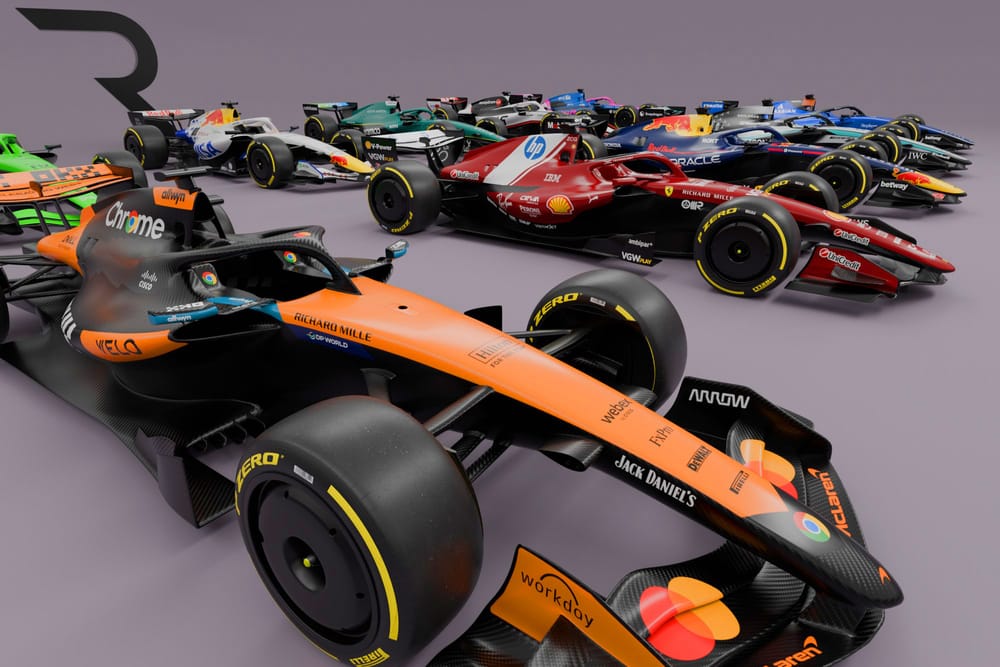Formula 1 drivers are set to face shortened activation zones for straightline mode in the wet in 2026 as part of a plan to avoid potential headaches for teams, The Race has learned.
One element of the rules revolution that is coming for 2026 is that F1's new cars will feature full active aero.
In cornering mode, the wings will have an increased angle of attack for maximum downforce, while in straightline mode they will be backed off to minimise drag.
Drivers will manually activate the different modes in specific activation zones that will be laid down by the FIA as suitable for drivers to shed downforce.
The regulations have opened the door for straightline mode to be deactivated in certain conditions - such as when the safety car is out, or if the race director feels there are safety concerns.
One such situation is if a race is hit by rain, as it would be deemed too dangerous for cars to be running at high speed with minimal downforce in the wet.
But while this may seem like a logical thing to do, as teams have dug into the rules they discovered a potential unintended consequence from this.
As well as increased drag from running in higher-downforce configuration having implications for energy deployment and fuel use, a much bigger stumbling block cropped up.
This was that if cars were running down straights with wings in high downforce mode, then the forces acting on the car would push it more into the ground - and risk its plank wearing away. McLaren's double disqualification in Las Vegas weekend shows the degree to which plank wear remains a constant pressure.
As Williams team principal James Vowles told The Race earlier this year about the straightline mode use in the wet: "It doesn't sound really exciting or important, but we're going to be running the cars low, and if you disable straightline mode and it dries up, you're just basically going to wear through the front of the car.
"So there's some details like that we've got to get into and fix, but we will do it."
Discussions with teams have taken place at both Technical Advisory and Sporting Advisory Committee level to try to find the best solution.
FIA single seater director Nikolas Tombazis said: "There's been a lot of discussion on this topic with a few different options.
"There were some final discussions on this topic at the technical meeting a few weeks ago, and there are a few different ways to solve it."
While the final regulations have not yet been officially signed off, The Race has learned that the solution that is being finalised is for the FIA is to impose modified lengths for activation zones in conditions that are not deemed safe - such as in the wet.
So in the dry, an activation zone may run the full length of a straight, while if it rains that activation zone will be much shorter - or even eliminated altogether.
The idea of having a shorter zone is that this will reduce the time that maximum forces are experienced by the car, so there is no risk of the cars bottoming out as much.
One other idea that is being worked on is for drivers to only be able to switch modes for the front wing element in the wet - which will help avoid the front of the car being pushed into the ground.
Though unrelated, this solution was proposed prior to both McLarens being disqualified from the Las Vegas Grand Prix for levels of skid-block wear that exceeded the permitted tolerance.
That was the third such instance of a team's cars falling foul of those tolerances in 2025. Ferrari (with Lewis Hamilton in the Chinese GP) and Sauber (with Nico Hulkenberg in the Bahrain GP) were the previous cases.



